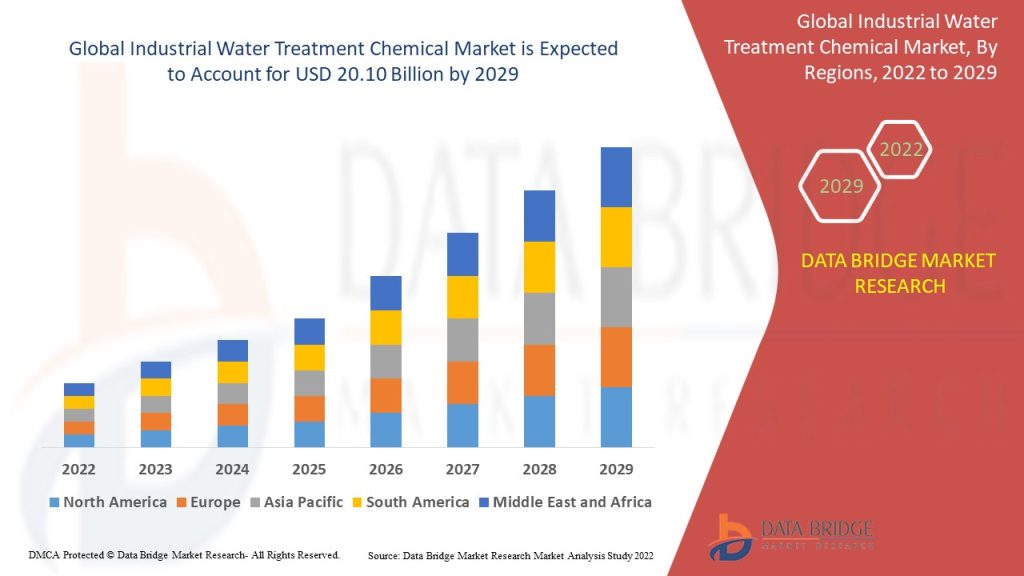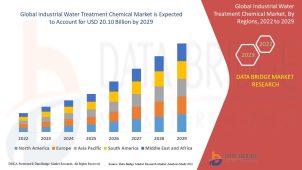A2Bookmarks India Social Bookmarking Website
Welcome to A2Bookmarks India, the premier social bookmarking platform tailored for individuals and businesses across India. Our website empowers you to effortlessly bookmark and showcase your web pages, driving enhanced online visibility and engagement. With specially curated business categories and the latest SEO-friendly tools and trends for 2025, we help elevate your digital footprint in a competitive online landscape. Join the A2Bookmarks India network today and take your website or business to new heights with ease and efficiency.


Industrial Water Treatment Chemical Market: Trends, Drivers, and Future Growth databridgemarketresearch.com
Water is one of the most critical resources for industrial operations across sectors such as power generation, oil and gas, mining, food and beverage, chemicals, and manufacturing. However, industrial processes often lead to water contamination, making it unsuitable for reuse or discharge without proper treatment. Industrial water treatment chemicals play a pivotal role in ensuring that water is safe, efficient for operations, and compliant with environmental regulations.
The industrial water treatment chemical market has been growing steadily, driven by rising industrialization, stricter environmental norms, and the increasing demand for clean water. This article explores the key dynamics of the market, including growth drivers, challenges, emerging opportunities, and future trends.
Market Overview
Industrial water treatment chemicals are specialized formulations used to improve water quality by removing impurities, scaling, and microbial growth. These chemicals are employed in processes such as boiler water treatment, cooling water treatment, membrane separation, and wastewater treatment.
The market encompasses a wide range of chemical categories, including:
-
Coagulants and flocculants – aid in the removal of suspended solids.
-
Corrosion inhibitors – prevent corrosion in pipelines, boilers, and cooling systems.
-
Biocides and disinfectants – control microbial growth and biofouling.
-
Scale inhibitors – reduce scaling caused by dissolved minerals.
-
pH adjusters and softeners – maintain the chemical balance of water.
With industrial sectors increasingly dependent on water for production and energy generation, the demand for such chemicals continues to rise globally.
Key Market Drivers
1. Industrialization and Urbanization
Rapid industrial growth in emerging economies has significantly increased the demand for water treatment solutions. Industries such as steel, petrochemicals, pulp and paper, and textiles are water-intensive and require efficient treatment chemicals to meet quality standards.
2. Stringent Environmental Regulations
Governments and environmental authorities across the globe are imposing strict wastewater discharge and water reuse policies. For instance, industries are required to treat wastewater before releasing it into natural water bodies. This has increased the adoption of advanced water treatment chemicals.
3. Growing Water Scarcity
With freshwater resources declining, industries are focusing on recycling and reusing water. Chemicals that enable water reclamation and reuse are in high demand, pushing market growth.
4. Expansion of the Power Generation Sector
Power plants are among the largest consumers of water for cooling and steam generation. To ensure operational efficiency and prevent equipment damage, water treatment chemicals are extensively used in this sector.
5. Technological Advancements
The development of eco-friendly and high-performance water treatment chemicals has opened new opportunities. Green chemicals that reduce environmental impact are gaining popularity as industries move toward sustainability.
Market Challenges
Despite promising growth, the market faces several challenges:
-
High cost of treatment chemicals: Premium formulations often increase operational expenses for industries.
-
Environmental concerns: Some chemicals themselves pose ecological risks if not managed properly, pushing industries to look for greener alternatives.
-
Fluctuating raw material prices: The market depends on petrochemical derivatives, which are subject to price volatility.
-
Competition from alternative technologies: Membrane filtration and UV disinfection systems are reducing reliance on certain chemical treatments.
Opportunities in the Market
The industrial water treatment chemical market presents several opportunities for growth and innovation:
1. Sustainable and Green Chemicals
The shift toward biodegradable and non-toxic chemicals provides scope for product innovation. Eco-friendly alternatives are expected to dominate future market trends.
2. Emerging Economies
Regions such as Asia-Pacific, the Middle East, and Africa are witnessing rapid industrialization, creating immense demand for treatment chemicals.
3. Water Recycling and Zero Liquid Discharge (ZLD) Systems
Industries are increasingly adopting ZLD systems to minimize wastewater discharge. This trend will drive the demand for advanced treatment chemicals.
4. Digitalization and Smart Water Management
Integration of digital monitoring with chemical dosing systems ensures precision and efficiency. The adoption of smart solutions can open up new revenue streams for chemical manufacturers.
Regional Insights
-
North America: The market here is driven by strict environmental laws, advanced industrial infrastructure, and technological innovations in water treatment.
-
Europe: The region emphasizes sustainability and eco-friendly practices, fueling demand for green water treatment chemicals.
-
Asia-Pacific: Countries like China, India, and Southeast Asian nations are experiencing rapid industrial growth, making the region the fastest-growing market.
-
Middle East and Africa: Water scarcity and oil & gas industry requirements are major drivers. Desalination plants also contribute significantly to the demand for treatment chemicals.
-
Latin America: Growing mining and manufacturing activities are increasing the adoption of water treatment solutions.
Competitive Landscape
The market is moderately consolidated, with key players focusing on expanding their portfolios, investing in research and development, and entering strategic partnerships. Leading companies compete on the basis of product quality, innovation, sustainability, and global reach.
Strategies commonly adopted include mergers, acquisitions, and collaborations with industrial end-users to strengthen their market position. The emphasis is increasingly shifting toward offering integrated solutions rather than standalone chemicals.
Future Trends
Looking ahead, several trends are expected to shape the industrial water treatment chemical market:
-
Eco-friendly Formulations – The demand for biodegradable and low-toxicity chemicals will continue to grow.
-
Smart Dosing Technologies – Digital monitoring and automation will reduce wastage and improve efficiency.
-
Industry-Specific Solutions – Customized formulations tailored to industries such as pharmaceuticals, food processing, or mining will gain traction.
-
Desalination Boom – Growing reliance on seawater desalination in water-scarce regions will create a significant demand for treatment chemicals.
-
Circular Economy Practices – Water recycling and reuse initiatives will remain central to industrial sustainability goals.
Conclusion
The industrial water treatment chemical market is at the forefront of addressing one of the most pressing challenges of modern times—ensuring the availability of clean and usable water for industries. With industrial expansion, rising water scarcity, and regulatory pressures, the demand for effective treatment chemicals is bound to escalate.
While challenges such as high costs and environmental concerns persist, innovations in green chemistry and smart water management present promising growth avenues. As industries strive to balance productivity with sustainability, the role of water treatment chemicals will become even more critical.
The future of this market lies in developing efficient, cost-effective, and environmentally responsible solutions that support both industrial growth and global water conservation efforts.




















